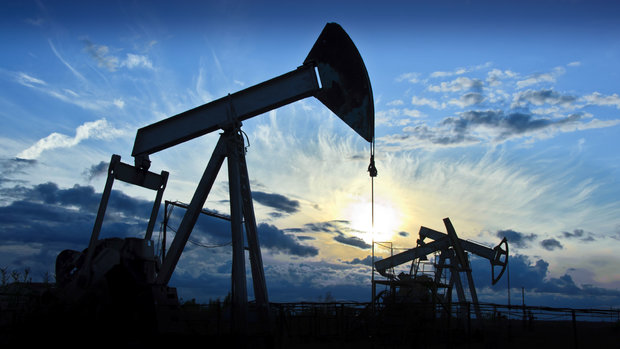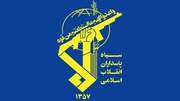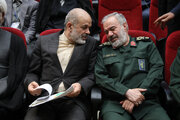Iran’s exports of oil stood at 2.35 million bpd before the sanctions were imposed against the country in 2011.
One of the main reasons for the increase in output has been a gradual increase in production from the South Azadegan field, in the strategic West Karun region, according to sources and Oil Ministry officials.
In recent months, Iran has signed a number of upstream development deals as part of its plans to increase oil and gas exports to pre-sanctions level of four mbd.
January oil exports rise
Iran’s crude oil and condensate exports rose three percent month-on-month in January as it continued to regain market share, widening its appeal among refiners around the globe in the process.
Iran was the only Middle Eastern producer to see exports rise in January, as others, like Iraq, Kuwait, Saudi Arabia, and the UAE, saw a fall in loadings, in line with agreed OPEC-led output cuts by crude producers. Unlike its peers under the landmark OPEC-led agreement, Iran has wiggle room to boost production to 3.8 mbd.
Iranian crude is similar in quality to barrels from other the Organization of the Petroleum Exporting Countries (OPEC) countries in its region, meaning this is an ideal time for it to broaden its customer base, sources said.
Iran, along with Libya and Nigeria, is allowed to produce “at maximum levels that make sense” as part of any output limits in a surprise deal reached last week by the OPEC.
Export of petroleum products
On February, Minister of Petroleum Bijan Zangeneh said that the export of petroleum products is an approach adopted by the Iranian Ministry of Petroleum, adding Iran is currently meeting most of its energy needs by natural gas which would allow raising export of petroleum products.
Zangeneh further announced that the Iranian Ministry of Petroleum is bent on raising export of petroleum products, adding gasoil and petrol will be the only main liquids consumed in Iran's energy mix by next year.
Iran can currently refine 1.7 mb/d of crude oil by its refineries.
According to Zangeneh, Iran's crude oil output is at 3.9 million barrels per day, adding the country is now pumping 3.9 million barrels of oil per day.
Asia crude export up
New official data show top four Asian buyers of Iran’s crude oil more than doubled their imports from the country in December compared with the same month a year earlier, for the third straight month.
The date from governments and ship-racking services also said the buyers – China, India, South Korea and Japan- imported 1.89mn barrels per day.
According to data by International Energy Agency, in absolute terms, imports slipped for a second consecutive month, from a peak of just under 2mn bpd in October, which was the highest since at least 2010.
During the first full year since the sanctions were lifted, Iran has boosted exports to its biggest Asian customers by nearly 60 percent to 1.63mn bpd.
Post-sanctions recapture
Europe represents Iran's biggest post-sanctions recapture of the lost market, where the continent currently receives more than 700,000 barrels per day of Iranian crude oil.
US-based oilfield services company Schlumberger signed last year an initial deal with an Iranian oil company for data-sharing. European energy companies like Austria's OMV and France’s Total also signed memorandums of understanding of their own, Press TV wrote.
Trade data released by Japan's Ministry of Finance on Monday showed Iran's crude oil imports cost Japan an average $43.87 a barrel for December, the third cheapest after Ecuador and Columbia.
According to Japan's Trade Ministry, the country’s imports jumped more than 40 percent from a year earlier to 246,243 bpd last month.
China's imports rose 30 percent to 689,530 bpd, meaning the country regained top spot among consumers after buying less than India for three consecutive months.
India's imports grew to 546,600 bpd, while South Korea's purchases rocketed to 410,387 bpd.
Old customers back
Last month, the International Group of P&I Clubs said it will soon provide nearly full coverage of reinsurance of around $7.8 billion per tanker for shipping Iranian oil, in addition to resuming reinsurance coverage for the National Iranian Tanker Co.’s oil tankers.
That can boost Iran’s already increasing oil exports as ongoing US sanctions had created hurdles on the availability of ships to carry Iranian barrels.
With it now easier for a wider pool of charterers and shipowners to transport and trade Iranian oil, the past month saw some old buyers returning. In the next few days, two Iranian VLCCs — the Huge and the Snow — will discharge a mix of Iranian heavy and light crude grades in the Rotterdam refining hub for the first time in five years.
National Iranian Oil Company sold a cargo of Iranian Light crude to Indonesia’s state-owned Pertamina for February loading as a test sale, the first direct crude sale between NIOC and Pertamina for around 15 years, according to sources close to the matter.
The Philippines’ PNOC has also recently signaled it was seeking to resume crude oil imports from Iran. PNOC president and CEO Pedro Aquino said recently his company and NIOC were in negotiations for the long-term sale of four million barrels of Iranian crude oil per month to the Philippines.
The sanctions restricted the country’s oil exports to around 1 million bpd among other economic bans – already described by analysts as the toughest the world has ever seen.
The sanctions were lifted in January 2016 after a deal that Iran reached with the P5+1 – the five permanent members of the Security Council plus Germany – over the Iranian nuclear energy program became effective.
The JCPOA – the Joint Comprehensive Plan of Action – which achieved between Iran and the Sextet of world powers envisaged the removal of a series of economic sanctions against Iran in return for steps by the country to restrict certain aspects of its nuclear energy activities.


























Your Comment